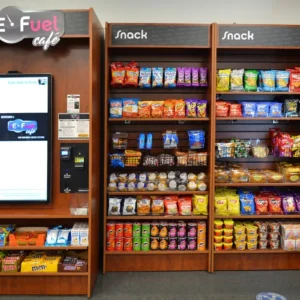In the midst of India’s rapid urbanization, the demand for smart and space-efficient infrastructure is at an all-time high. As vehicle ownership continues to grow, especially in metropolitan areas, cities face a crucial challenge where to park all the cars. The answer lies in vertical innovation: the Car Stack Parking System.
Compact, automated, and cost-effective, this technology offers a revolutionary solution to limited parking space, congestion, and inefficient land use in urban areas. From residential complexes to malls, offices, and government buildings, the car stack parking system is reshaping how we approach vehicle storage.
What Is a Car Stack Parking System?
A Car Stack Parking System is a mechanical or semi-automated parking structure that allows vehicles to be parked on multiple levels vertically, one above another. The system typically uses hydraulic or electric lifts to move vehicles into position and retrieve them safely when needed.
This form of vertical parking not only reduces the area required but also maximizes the parking capacity on limited land a necessity in crowded cities.
Why Car Stack Parking Systems Are the Future
1. Urban Land Constraints
Real estate in Indian metros is costly and scarce. Traditional parking lots occupy large areas, reducing available space for essential construction. Car stack systems offer a viable alternative.
2. Increased Vehicle Ownership
India adds millions of new cars every year, with urban centers like Mumbai, Delhi, and Bengaluru facing severe parking shortages.
3. Rising Demand for Smart Infrastructure
Smart cities require smart parking solutions that are automated, secure, and sustainable. Car stack systems fit this requirement perfectly.
4. Eco-Friendly Urban Design
Minimizing land usage and idling time contributes to lower emissions and supports green urban planning.
Types of Car Stack Parking Systems
Two-Level Stackers
Best suited for residential and small commercial projects. One car is parked on the platform while another sits underneath.
Puzzle Stackers
Horizontal and vertical movement systems that can accommodate multiple cars in limited space.
Rotary Stack Systems
Cars rotate in a vertical loop, similar to a Ferris wheel. Common in tight city plots.
Tower Stack Systems
Fully automated and capable of stacking vehicles across multiple floors. Ideal for public and high-volume commercial usage.
Advantages of a Car Stack Parking System
- Space Efficiency: Utilizes vertical space to reduce land usage by up to 70%.
- High Capacity: Allows storage of multiple vehicles in a compact footprint.
- Time-Saving: Automated retrieval systems make vehicle access faster and hassle-free.
- Safety & Security: Vehicles are enclosed and protected from theft, vandalism, and weather.
- Reduced Pollution: Less time spent searching for parking results in fewer emissions.
- Aesthetic and Organized: Offers a clean, organized alternative to chaotic open parking.
Key Applications in Urban India
- Residential Complexes: Especially in gated communities with limited open space.
- Corporate Campuses: To manage parking for employees and visitors efficiently.
- Commercial Buildings & Malls: Offer better customer convenience and maximize usable floor space.
- Hospitals & Institutions: Where quick access and organized parking are essential.
- Airports and Railway Stations: Cater to large footfalls with high turnover.
Implementation in Indian Cities
Mumbai
With land being one of the most expensive in the world, Mumbai has become a leader in adopting car stack parking systems in both private and public projects.
Delhi NCR
Government initiatives and private builders are incorporating stack parking into new developments to handle growing demand.
Bengaluru & Hyderabad
Tech hubs are integrating these systems to improve infrastructure in smart campuses and tech parks.
Tier-2 Cities
Emerging smart cities like Indore, Nagpur, and Jaipur are beginning to explore stack systems to stay ahead of traffic and infrastructure problems.
Integration with Future Technologies
Car Stack Parking Systems are evolving rapidly. New trends include:
- IoT & Smart Sensors: Real-time slot availability and automated booking.
- Mobile App Integration: Allowing users to book, pay, and monitor parking remotely.
- EV Charging Compatibility: Integrating charging docks in stack systems.
- AI-Based Slot Optimization: For faster vehicle retrieval and better load distribution.
Government Support and Smart City Mission
The Smart Cities Mission by the Government of India encourages cities to adopt intelligent infrastructure. Car stack parking is recognized as a critical urban mobility solution under this plan. Government authorities are beginning to incentivize such systems in new construction permits, especially in high-traffic zones.
The Car Stack Parking System is not just an engineering innovation it is a necessity for modern urban living. As India’s cities grow taller and busier, horizontal space is no longer an option. Vertical parking solutions offer a smart, sustainable, and secure way forward. Whether you’re a builder, city planner, or resident welfare association, now is the time to consider integrating car stack parking into your space planning. It’s efficient. It’s scalable. And it’s the future of urban mobility.
